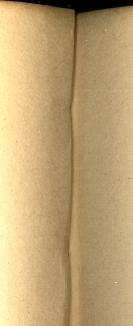138 DOGS AND ALL ABOUT THEM
J. Shorthose, G. Potter and S. Smale, who may be considered the oldest Setter judges, and who have owned dogs whose prowess in the field has brought them high reputation. Mr. B. J. Warwick has within recent years owned probably more winners at field trials than any other owner, one of his being Compton Bounce. Captain Heywood Lonsdale has on several occasions proved the Ightfield strain to be staunch and true, as witness the doughty deeds of Duke of that ilk, and the splendid success he achieved at recent grouse trials in Scotland with his Ightfield Rob Roy, Mack, and Dot, the firstnamed winning the all-aged stake, and the others being first and third in the puppy stake. Mr. Herbert Mitchell has been another good patron of the trials, and has won many important stakes. Mr. A. T. Williams has also owned a few noted trial winners, and from Scotland comes Mr. Isaac Sharpe, whose Gordon Setter, Stylish Ranger, has effectually put a stop to the silly argument that all this breed are old men's dogs.
Many of the older field trial men hold tenaciously to the opinion that the modern exhibition Setter is useless for highclass work, and contend that if field-trial winners are to be produced they must be bred from noted working strains. Doubtless this prejudice in favour of working dogs has been engendered by the circumstance that many owners of celebrated bench winners care nothing about their dogs being trained, in some cases generation after generation having been bred simply for show purposes. Under such conditions it is not to be wondered at that the capacity for fine scenting properties and the natural aptitude for quickly picking up a knowledge of their proper duties in the field is impaired. But there is no reason why a good show dog should not also be a good worker, and the recent edict of the Kennel Club which rules that no gun dog shall be entitled to championship honours until it has gained a certificate of merit in field trials will doubtless tend towards a general improvement in the working qualities of the breeds whose providence is in the finding and retrieving of game.
CHAPTER XXIV THE RETRIEVERS
IT is obviously useless to shoot game unless you can find it after it has been wounded or killed, and from the earliest times it has been the habit of sportsmen to train their dogs to do the work which they could not always successfully do for themselves. The Pointers, Setters, and Spaniels of our forefathers were carefully broken not only to find and stand their game, but also to fetch the fallen birds. This use of the setting and pointing dog is still common on the Continent and in the United States, and there is no inaccuracy in a French artist depicting a Pointer with a partridge in its mouth, or showing a Setter retrieving waterfowl.
The Springer and the old curly-coated water-dog were regarded as particularly adroit in the double work of finding and retrieving. Pointers and Setters who had been thus broken were found to deteriorate in steadiness in the field, and it gradually came to be realised that even the Spaniel's capacity for retrieving was limited. A larger and quicker dog was wanted to divide the labour, and to be used solely as a retriever in conjunction with the other gun dogs. The Poodle was tried for retrieving with some success, and he showed considerable aptitude in finding and fetching wounded wild duck ; but he, too, was inclined to maul his birds and deliver them dead. Even the old English Sheepdog was occasionally engaged in the work, and various crosses with Spaniel or Setter and Collie were attempted in the endeavour to produce a grade breed having the desired qualities of a good nose, a soft mouth, and an understanding brain, together with
139
